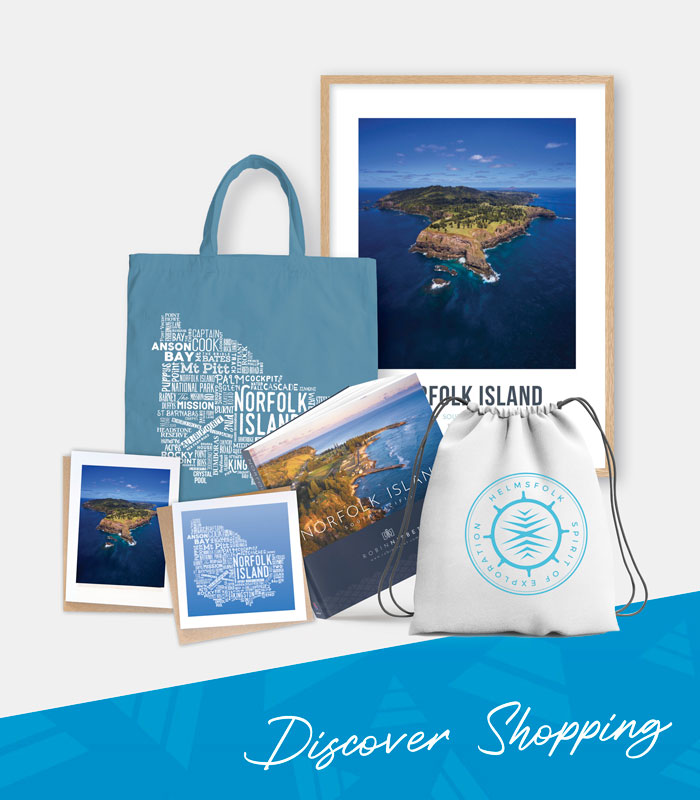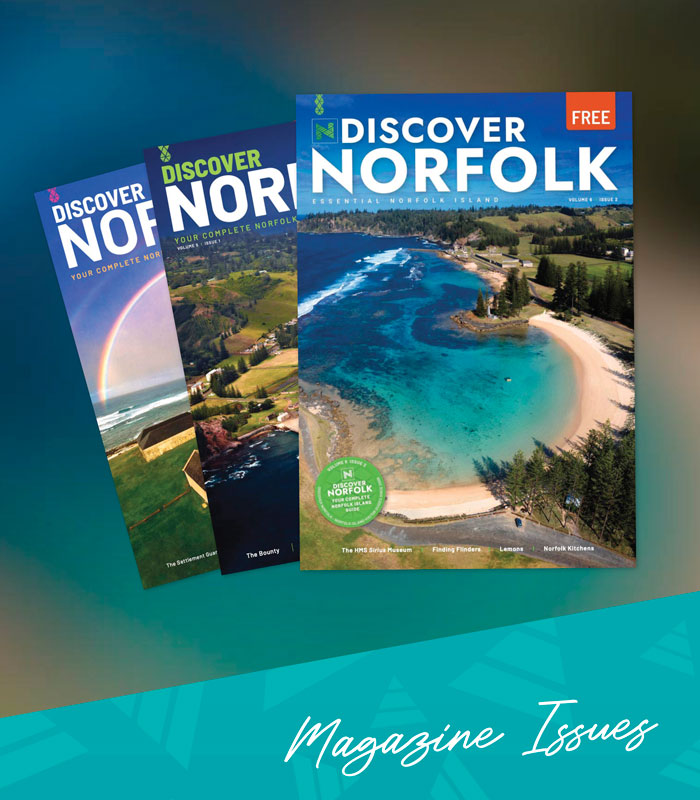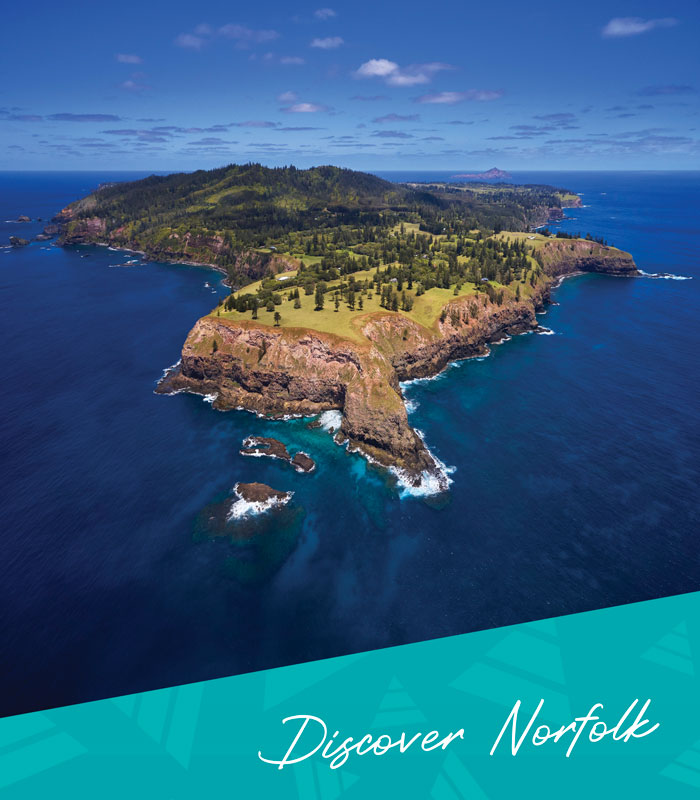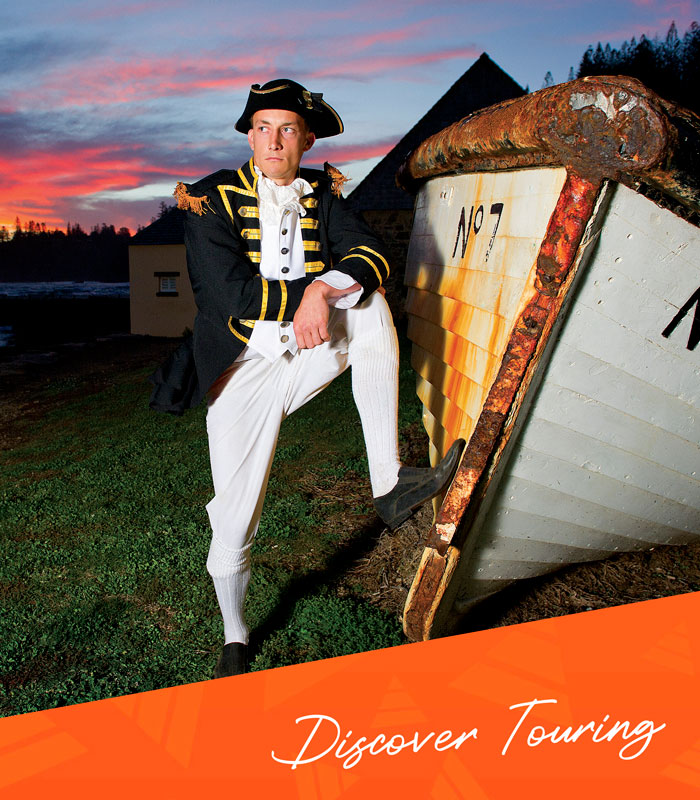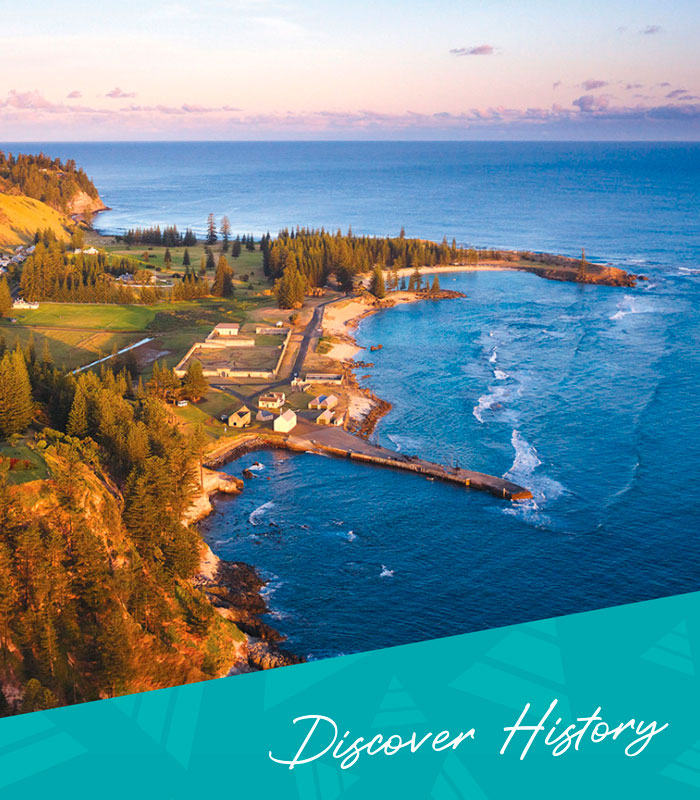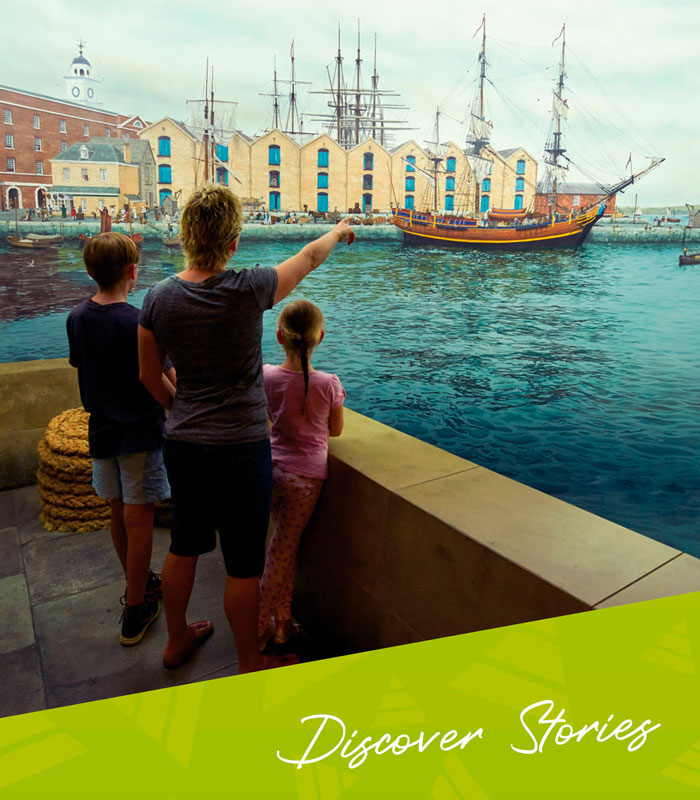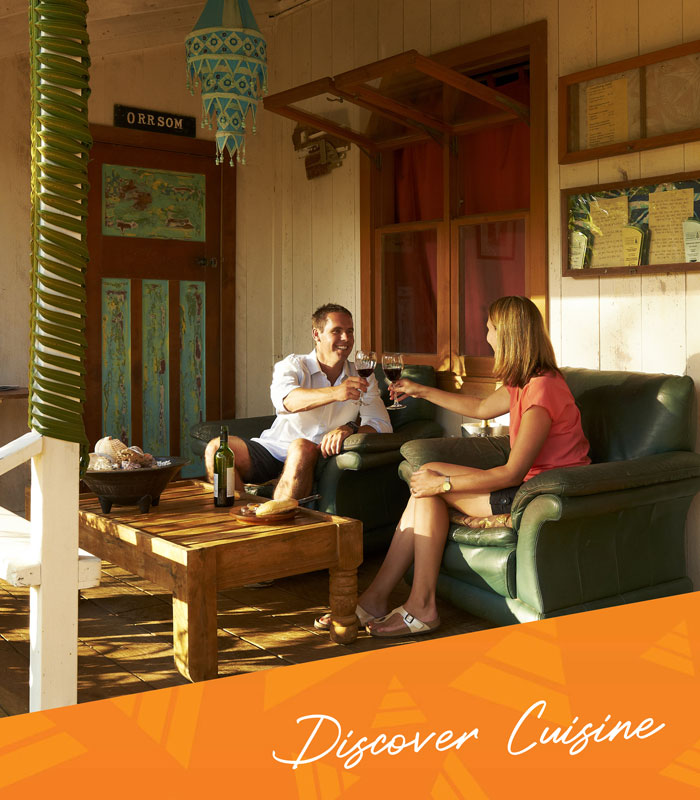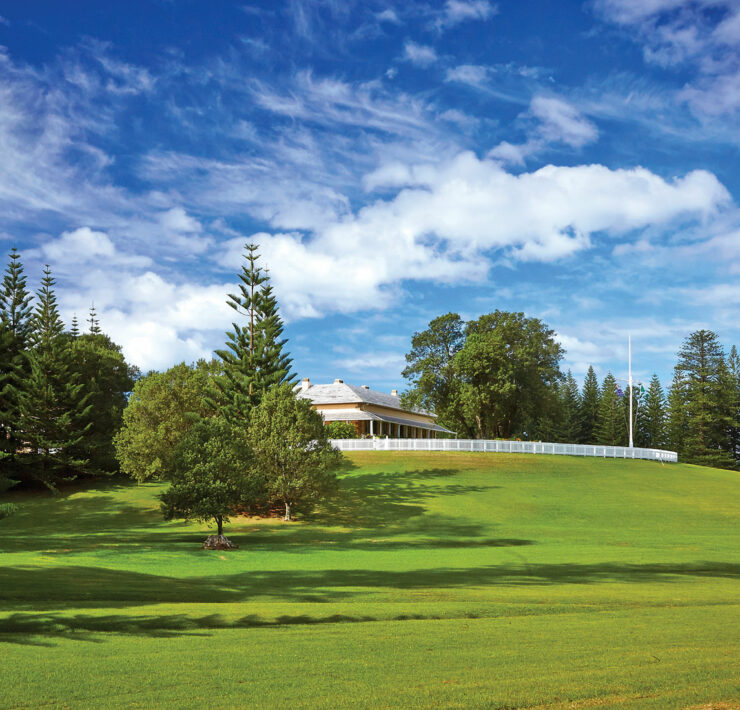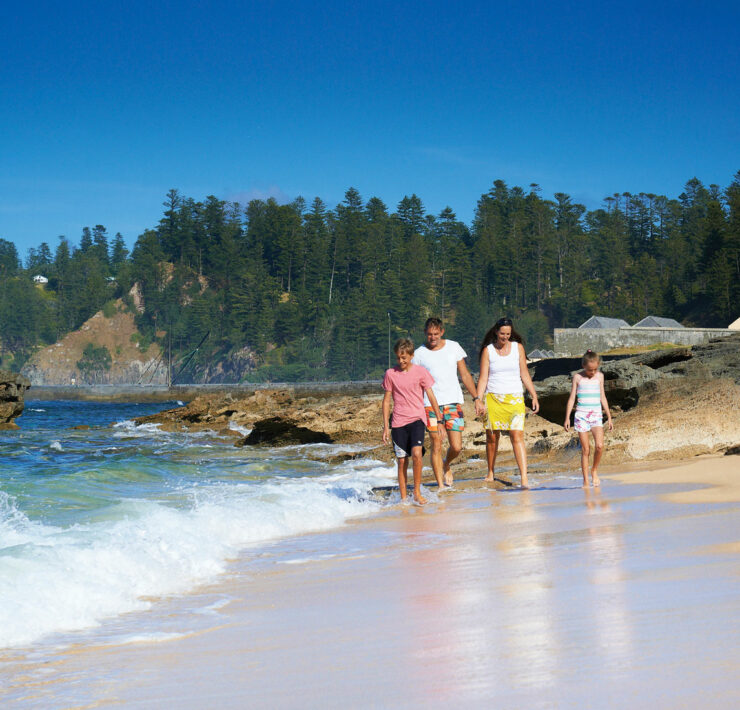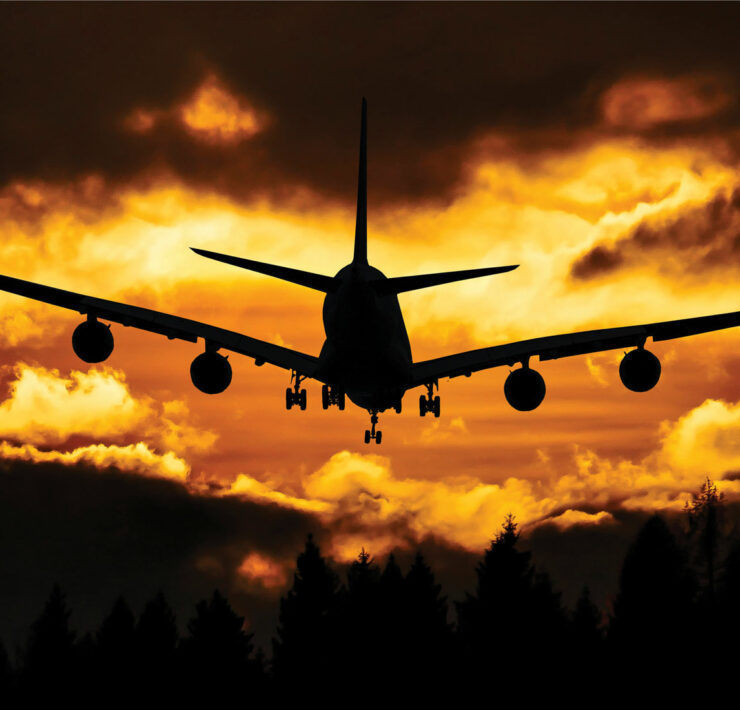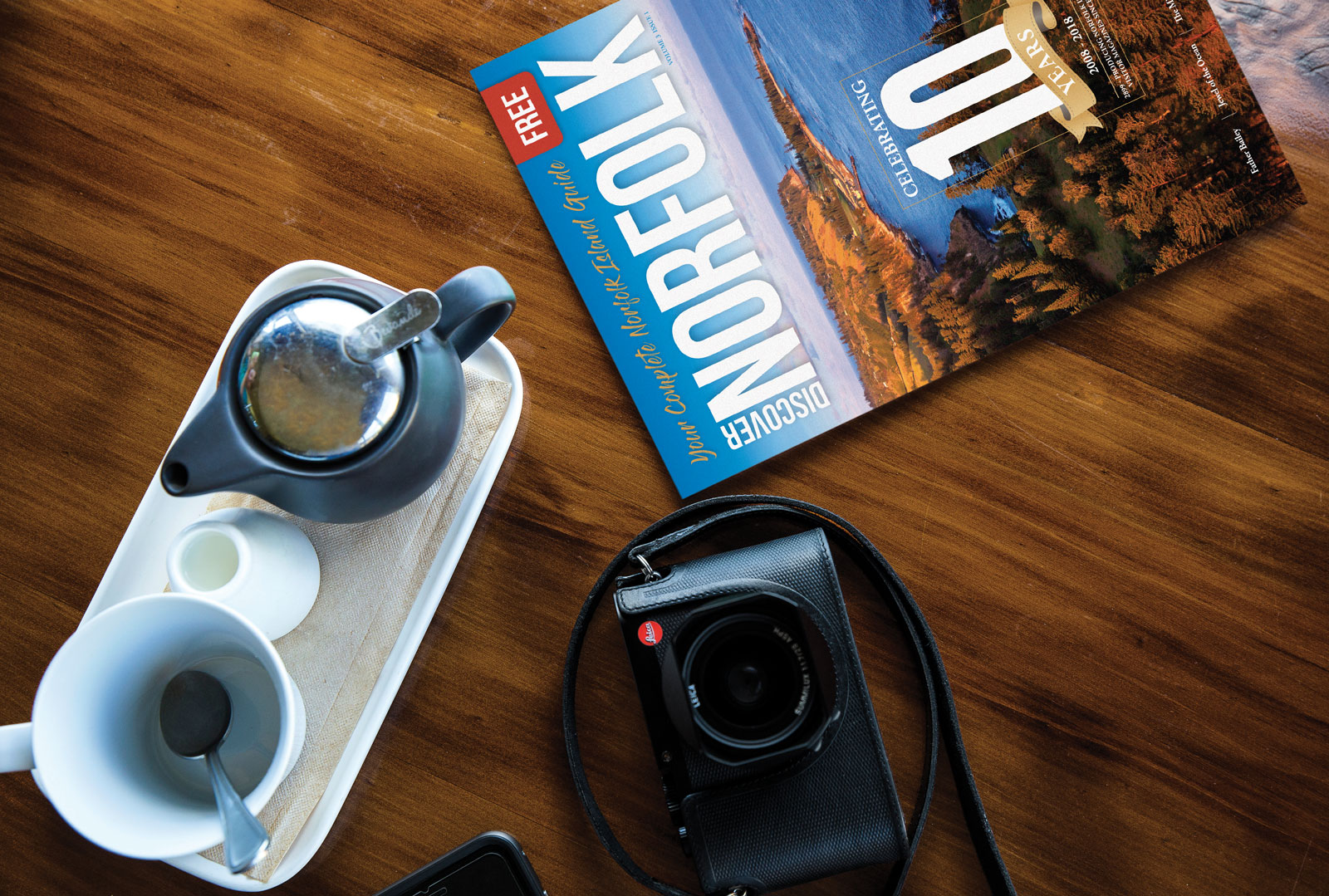Home » All Articles » Food Glorious Food: The Norfolk Island Food Festival
Food Glorious Food: The Norfolk Island Food Festival

Let me try to explain the annual Norfolk Island Food Festival. I’ll need to do it in a roundabout way. Let’s begin with a single word: bounty.
The word bounty has many colourful, overlapping facets when applied to Norfolk Island. Its rich soil and produce is credited with helping feed the fledgling Sydney colony until the First Fleeters discovered the fertile Paramatta valley. In fact, many of the settlers of that first English colony on Norfolk, which began only six weeks after the First Fleet’s landing at Sydney Cove in January, 1788, didn’t want to leave when eventually instructed to vacate Norfolk for Van Diemen’s Land. It would take some seven years of cajoling for the last of the people to be removed in 1814. It was a goodly, in fact bounteous place to live even then.
Bounty isn’t the word to describe the second English settlement, a cruel penal outpost which existed from 1825-1855. But Norfolk’s rich promise, along with a multitude of feral livestock, fowl and many varieties of fruit left from the previous two settlements, would await the Pitcairn Islanders when the entire population relocated here on 8 June, 1856.
The Pitcairners, by coincidence the descendants of the famous mutineers of the British ship, HMAV Bounty, in relocating to an island much larger, but considerably further south, had to quickly adapt their foodstuffs and how they prepared them to the new surroundings. This, no doubt, would have been challenging. (No coconuts!)But with the Polynesian influences they brought with them and the unknown grains, vegetables and livestock already on the Island, in combining the two, I’m imagining the start of a particular world view regarding food – its propagation, adaptation, preparation and celebration – that would in time champion diversity and experimentation and set the stage for what would follow.
What followed to this land of abundance and new home of a people, were more people of widely different backgrounds, some staying a short while, others permanently. And each element and phase would have a marked effect on what would be placed on a Norfolk Island dinner table.
Soon after the arrival of the Pitcairners, in ever increasing numbers came American whalers and, more importantly to the concept of food, their wives. Norfolk was considered an exceptionally pious community, and so American whaling captains would leave behind their wives for months on end while they whaled the Antarctic. This period, which lasted for most of the second half of the 19th-century, would profoundly influence Norfolk culture and brought with it that singular homage to bounty and harvest, the holiday of Thanksgiving. Thanksgiving on Norfolk is observed the last Wednesday in November and is the centrepiece of the week-long Food Festival. Norfolk cuisine has ever since had a decided American Eastern Seaboard flavour, especially our roast meats and sweet pies. Simultaneous to this, a wonderfully divergent phenomenon was having its own effect on Island foods.
From the years 1866 to 1921, the Melanesian Mission based its headquarters and mission school on Norfolk Island. In the 60 years this distinct and robust community was here, its staff and students introduced many foods from the Melanesian islands. Manioc, sugar cane, yam; multiple varieties of banana and passionfruit, to name a very few. These, too, were added to the kitchen larder and the menu.
However, Norfolk Islanders were also travelling, on whalers, merchant ships, for pleasure, and returning with foodstuffs from various parts of the globe. Three avocado seeds arrived in the mid-1920s; the mango shortly thereafter. This was the ‘pre-quarantine’ period, when introducing plants had few restrictions. The variety of available foods on the Island was limited only by what could be found and planted. It is this early period of easy entry followed by strict quarantine requirements in the modern-era that in many ways defines our appreciation of food and feasting today.
Although this is expected to change in the near future, for the past several decades a strict quarantine regime has served to protect Norfolk’s produce from introduced pests. At the time of writing, the only commodities permitted to be imported are onions, potatoes, garlic and ginger. Everything else has to be grown on the Island. As a consequence, virtually all of our produce is seasonal, harvested fresh and local. The concept of a ‘Paddock to Plate’ food experience, sought by foodies everywhere, is epitomised on Norfolk Island every day.
What has really made this cornucopia exciting, as well as healthy, was yet another wave of people arriving with the developing tourism industry in the 1960s. People came to Norfolk to work and live and many brought and continue to bring with them new ideas and recipes. Restaurants have flourished and this ongoing exploration of freshness, diversity and experimentation amidst abundance has taken the appreciation of food and feasting to an even higher level. It became the perfect confluence of the traditional and the new, in ever-changing forms, and is the genesis of our Food Festival today.
Heading into its fourth year this November, the Food Festival is the Norfolk community celebrating the best foods it has to offer, in countless ways of preparation. Everyone participates, from growers, preparers, eager Island residents, to the lucky visitors who are able to join in the fun. On display is everything edible that people can produce and the imagination can conjure on this bountiful island. Indeed, it occurred to me that a difference between our many holiday feasts, always lavish with selection, and the Festival is that our feasts are to celebrate a holiday and the Festival is to celebrate feasting itself.
Our finest restaurants and cafes offer their best and most appetising wares. Special feast dinners are to be had during the week, all centred around the public holiday of Thanksgiving, a day set aside to be thankful. One night in particular, the spacious Compound, built in the 1840s and situated along the Kingston ocean front, plays host to the outdoor gala: ‘Taste Norfolk’s Bounty’. It is open to anyone in the community with something to roast, BBQ, squeeze, wrap and share. Each has their own stall vying for your attention and luring you to them. And what is probably most enticing for the Festival-goer is each vendor takes this as an opportunity to outdo their best from the previous year. It is truly an epicurean delight.
Give in to the temptation. Each temptation. The fresh fruit smoothies, the pad thai’s and pistachio praline steamed buns, the ribs slow-smoked in Bourbon BBQ sauce, local cheeses, seafoods of all sorts cooked every which way, hand-dipped chocolates and frosted cupcakes decorated into recognisable landscapes, the myriad novelties based on banana or pawpaw are only some of what comes to mind remembering last year’s Festival.
To date the festival has attracted food lovers and celebrity chefs such as Fast Ed and Dominique Rizzo. This past year Dominque returned with her own tour group of eagre food gourmands to experience Norfolk Island and enjoy all that the Festival has to offer.
I’m envisaging people already thinking of what to produce and how to present it for the next Festival in 2017. And many visitors are already planning to return, as well. Its features of diversity and experimentation amidst locally-produced abundance, set against the beautiful Norfolk Island landscape is unparalleled in the Pacific.
Each year’s Festival has built on the success of the year before. Imagine a food event in which the unexpected is anticipated and the creative is the norm. And above all, be hungry. The Norfolk Island Food Festival has it all. See you there.
____
Image Credit: Robin Nisbet
www.robinnisbet.com
____
Article content disclaimer: Article first published in Discover Norfolk, Volume 01 Issue 01, 2017. Please note that details of specific travel, accommodation and touring options may be outdated. References to people, places and businesses, including operating days and times may be have changed. References to Government structure and Government businesses/entities may no longer be applicable. Please check directly with businesses and/or Government websites directly rather than relying on any information contained in this article before you make travel arrangements.


